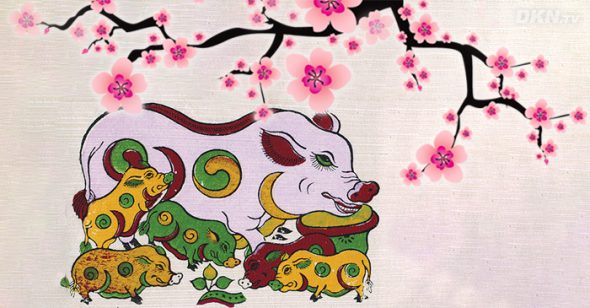Cultural beauty of Dong Ho folk painting
Dong Ho village is located on the bank of Duong river in Thuan Thanh district, Bac Ninh province. Dong Ho folk paintings are popular with most Vietnamese people, but especially those in the Red River region. Dong Ho folk paintings are not just decorative; they convey lessons about morality.

Mother pig and piglets.
The craft of Dong Ho folk paintings in Song Ho commune, Bac Ninh province is now more than 400 years old. Together with Hang Trong and Kim Hoang folk paintings, Dong Ho paintings lend color to Vietnamese folk painting. The craft has been handed down through generations.
Dong Ho painting is special because it is printed by hand entirely from woodblocks. Each painting has one woodblock for the outline and several others for printing a color. The number of the woodcuts corresponds to the number of colors a painting has. The colors of paint are processed from natural materials Vietnam. The woodblocks are engraved by hand and can be kept for many years.
Dong Ho paintings are printed on do paper made from do tree bark and covered with a layer of scallop shell powder mixed with sticky rice paste. The scallop seashell gives a sparkling white background while the rice paste makes the paper suppler and able to keep colors for a long time. To print a painting, the woodblock is applied with paint and pressed on a sheet of paper. The process is repeated for each color and the finished picture is the result of joining different colors in a certain order.
Dong Ho paintings bear significant historical, cultural and artistic values reflecting the beliefs and daily activities of people in the Red River Delta. This art genre has been recognized as a national intangible heritage. This recognition is expected to help preserve and develop the art while increasing the public’s awareness of traditional cultural values.






